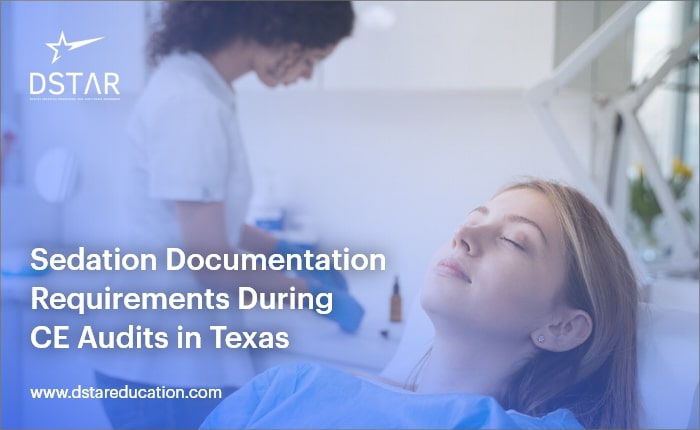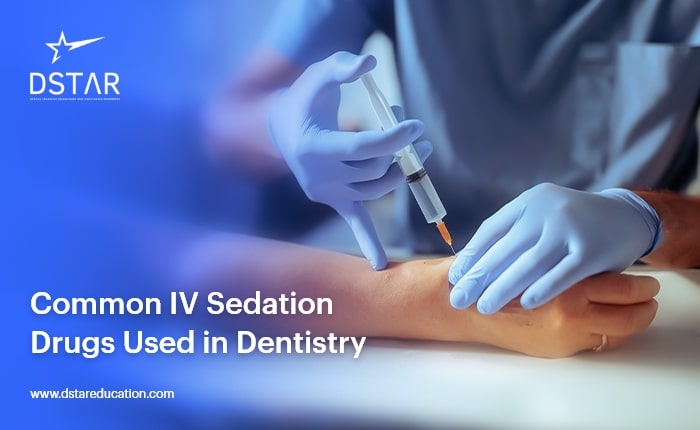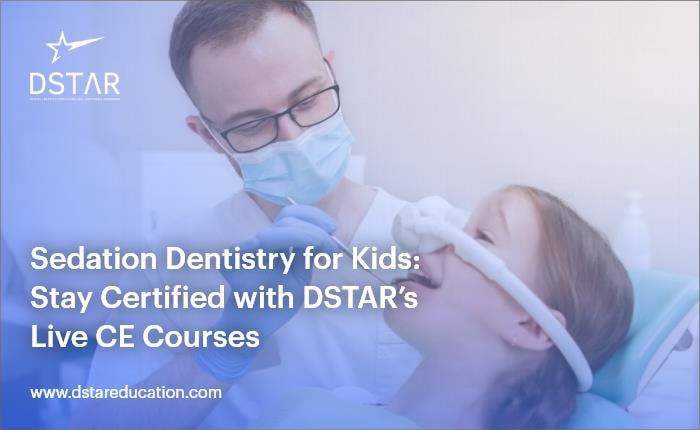Dentists in Texas face one of the most rigorous systems of continuing education oversight in the nation. While completing courses is mandatory, proper documentation is equally critical. Many providers fail audits not because they skipped courses, but because they lacked adequate proof of compliance. Sedation documentation requirements represent the backbone of this process, ensuring that every hour claimed during renewal is verifiable, accurate, and tied to approved providers like DSTAR Education, recognized as a Nationally Approved PACE Program Provider.
This article explains how dentist continuing education requirements intersect with sedation CE audit checklist expectations, what the CE audit requirements in Texas involve, and how sedation CE recordkeeping protects both licensure and professional reputation.
1. Why Documentation Matters in Dentist Continuing Education
Texas dentists must complete structured continuing education for dentists to maintain sedation permits. However, meeting the education required for dentist renewal is only one part of compliance. Without meticulous sedation documentation, CE hours may be rejected during random audits, leading to fines, permit suspension, or license restrictions.
Documentation serves two key roles: proving completion and demonstrating integration of CE learning into practice.
2. CE Audit Requirements in Texas: The Regulatory Framework
The CE audit requirements in Texas outlined by the Texas State Board of Dental Examiners (TSBDE). The TSBDE may randomly select dentists for an audit during license renewal. If selected, they must produce documentation verifying every CE hour completed during the cycle.
Failure to meet sedation documentation requirements exposes dentists to disciplinary action. Even if the dentist has legitimately completed the hours, a lack of acceptable proof creates legal and compliance risks.
The Sedation CE Audit Checklist
Auditors evaluate compliance using a sedation CE audit checklist. This list includes verification of sedation-specific CE, proof of ACLS/PALS certification when applicable, and detailed sedation CE recordkeeping.
Each record must include:
- Course title and subject
- Date of completion
- Provider name and accreditation (ADA CERP, AGD PACE, or TSBDE-recognized)
- Number of CE hours earned
- Certificate of completion
3. Common Documentation Errors in Continuing Education for Dentists
Even diligent practitioners can make errors that violate sedation documentation requirements.
The most common mistakes include:
- Submitting CE hours from non-approved providers
- Failing to keep the original certificates
- Recording only partial course information (missing provider details or accreditation)
- Allowing documentation to expire or fade (older digital records sometimes become inaccessible)
Each error undermines compliance with dentist continuing education requirements and can jeopardize sedation permits.
4. Sedation CE Recordkeeping Standards
Proper sedation CE recordkeeping goes beyond filing certificates. Texas regulations require dentists to retain CE records for at least five years following each renewal cycle. Records must remain organized, accessible, and verifiable.
Recommended practices include:
- Maintaining both digital and physical files
- Using CE tracking software approved for healthcare providers
- Backing up certificates on secure servers
- Assigning office staff responsibility for CE tracking
By following these steps, dentists align with CE audit requirements in Texas while reducing the risk of failed audits.
5. Integrating Documentation into Dentist Continuing Education Requirements
Every course completed should be tied back to the education required for dentist renewal. Sedation documentation requirements exist to confirm that courses address topics relevant to sedation, emergency management, or patient safety.
Dentists cannot assume that all CE will qualify. For sedation-related permit renewal, auditors specifically examine sedation course content. Auditors can reject hours without matching documentation, even if the dentist completed them with an otherwise approved provider.
6. Legal Risks of Inadequate Documentation
Legal challenges frequently arise when dentists fail to meet sedation documentation requirements. Poor recordkeeping can lead to claims of sedation CE malpractice, denial of CE hours, or legal issues tied to regulatory non-compliance.
These risks expand when sedation permits are involved. Auditors can reject hours without matching documentation, even if the dentist completed them with an otherwise approved provider. Regulators view missing or incomplete records as a significant violation of dental CE regulatory requirements.
7. The Role of Technology in Sedation CE Recordkeeping
Dentists increasingly rely on technology to streamline sedation CE recordkeeping. Platforms integrated with ADA CERP or AGD PACE providers automatically log completed hours, generate certificates, and store records in secure formats.
By adopting CE tracking systems, dentists can meet sedation documentation requirements with fewer errors, protect against data loss, and respond quickly during audits.
8. Preparing for an Audit: Practical Compliance Steps
When facing an audit, preparation determines success. Dentists who proactively align with sedation CE audit checklist standards rarely face problems.
Steps include:
- Reviewing CE records annually
- Cross-checking course providers against approved lists
- Keeping ACLS and PALS certifications current
- Creating a “compliance binder” containing all certificates and course details
- Training office staff to access CE documentation efficiently
9. Continuous Improvement Beyond Minimum Requirements
While meeting dentist continuing education requirements satisfies legal mandates, best practices involve going beyond the minimum. Dentists should routinely evaluate whether their CE documentation systems align with industry best practices.
Strong sedation CE recordkeeping not only ensures compliance but also demonstrates professional integrity, patient safety commitment, and readiness for future regulatory changes.
Conclusion
Sedation documentation requirements define the difference between compliance and violation during CE audits in Texas. Dentists who meet the education required for dentist renewal but fail to maintain proof risk penalties, suspension of sedation permits, or broader legal consequences.
By mastering the sedation CE audit checklist, adhering to CE audit requirements in Texas, and investing in precise sedation CE recordkeeping, providers ensure both regulatory compliance and professional accountability.
FAQs
Q1. What are the sedation documentation requirements in Texas?
Ans: They include maintaining course certificates, provider accreditations, completion dates, and proof of sedation-specific CE hours for at least five years.
Q2. How do CE audit requirements in Texas affect dentists with sedation permits?
Ans: Dentists must produce complete documentation during audits. Missing or non-approved CE hours can lead to suspension of sedation permits.
Q3. What is included in the sedation CE audit checklist?
Ans: Auditors review sedation CE certificates, ACLS/PALS records, provider accreditation, and total CE hours.
Q4. Why is sedation CE recordkeeping critical?
Ans: Without accurate records, dentists risk audit failure, permit suspension, and potential legal liability.
Q5. How does continuing education for dentists differ from sedation-specific CE?
Ans: General CE covers broader clinical and professional topics, while sedation CE directly addresses patient safety, anesthesia, and compliance.
Q6. What happens if a dentist fails to meet sedation documentation requirements?
Ans: They may face fines, rejected renewal applications, or disciplinary action from TSBDE.
Q7. Can technology simplify CE documentation for dentists?
Ans: Yes. CE tracking software automatically records courses, stores certificates, and provides compliance-ready documentation.
References
- Texas State Board of Dental Examiners – https://tsbde.texas.gov
- Texas Administrative Code – Title 22, Part 5, Chapter 110 – https://www.sos.state.tx.us
- ADA Guidelines for Sedation and Anesthesia – https://www.ada.org
- Academy of General Dentistry (AGD PACE) – https://www.agd.org
- Journal of Dental Anesthesia and Pain Medicine – https://www.jdapm.org
- OSHA Emergency Preparedness for Healthcare – https://www.osha.gov
 Take Free TSBDE Anesthesia Jurisprudence Practice Exam Now!
Take Free TSBDE Anesthesia Jurisprudence Practice Exam Now!












